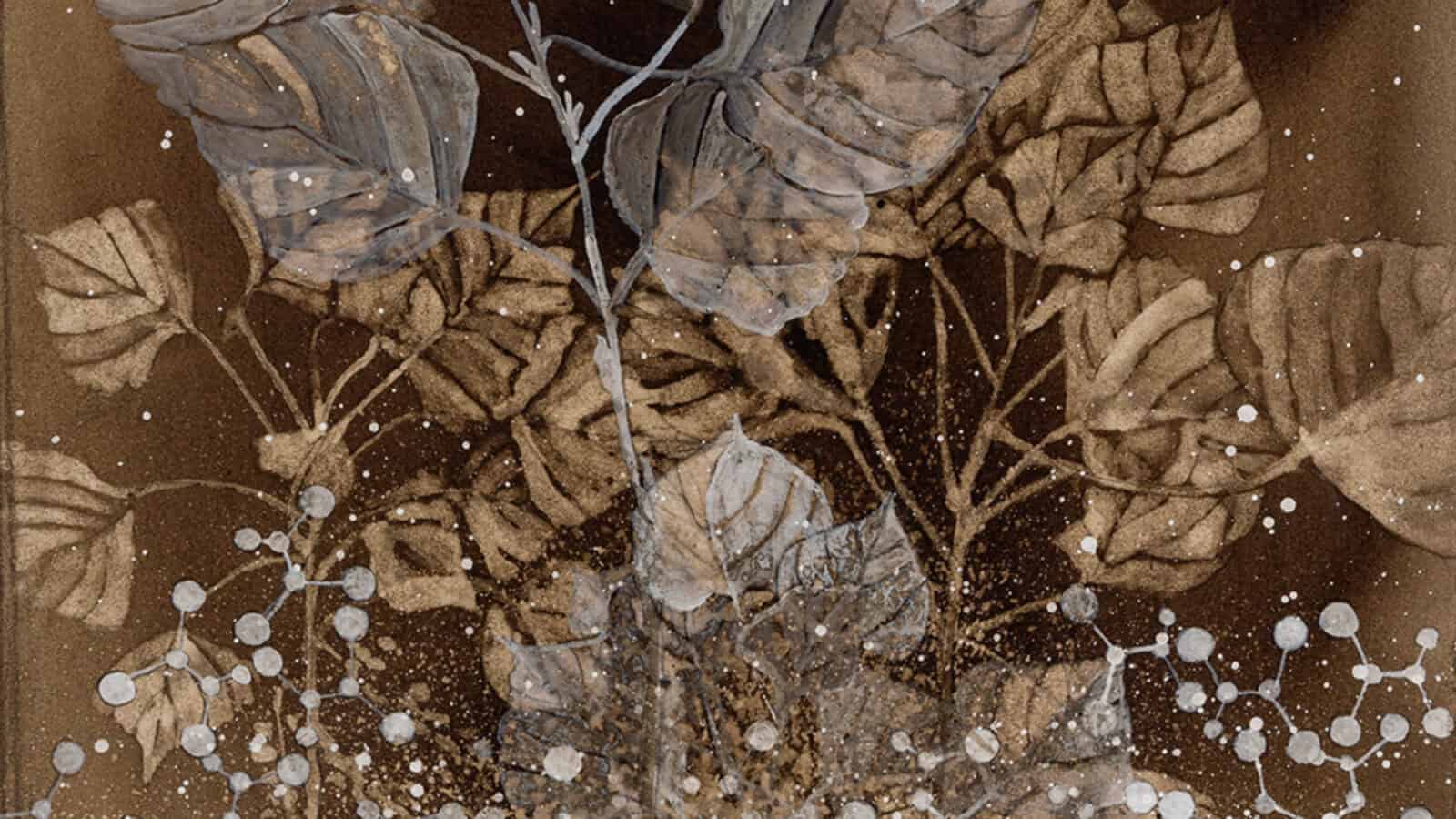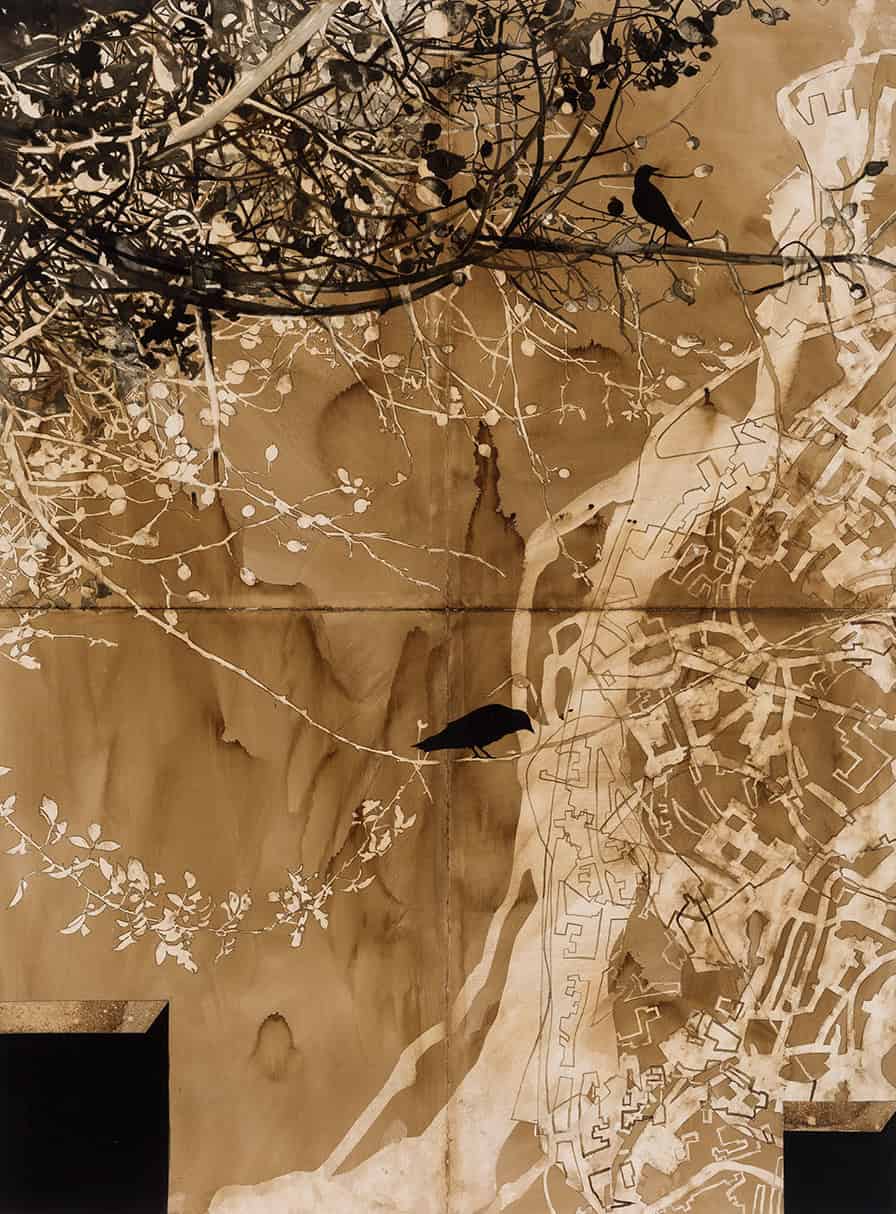Poplar leaves tip and glimmer dark chocolate and copper, as though they’re blowing in the moonlight.
Ellen Driscoll paints them in walnut ink and sumi, the ink Japanese artists have used in calligraphy sumi-e ink-brush painting for centuries. And below them the plants seem rooted in a mycological forest of molecules.
The poplars are healing the earth, she says from her studio in Brooklyn, N.Y. She is drawing, with deep attention, plants that can grow in places humans have devastated, like sunflowers in Chernobyl. And over time, some can begin to counteract the waste and draw toxic chemicals out of the ground.
The process is called phytoremediation, which means plants cleaning and restoring — she says in her own work, some plants can absorb or reduce contaminants in soil, water or air, through their roots.
‘The process is called phytoremediation, which means plants cleaning and restoring.’
For the Berkshires this spring, she has explored this kind of healing in 24 drawings — including 17 new works she has created for her solo show — in Re-Rooted at Berkshire Botanical Garden.
She draws on a long practice in public art, sculpture, drawing, and installations, with fellowships from the Guggenheim Foundation and the National Endowment for the Arts and work in the collections of the Metropolitan Museum of Art, and the Whitney Museum of Art, and she taught as Program Director of Studio Arts at Bard College from 2013 to 2021 – she is a professor emerita now.
In this new show, she is touching a concern that still regularly appears here in community debates, as towns across the county look into the imprint left from a century and more of industrial activity — as contemporary conversations are continuing now around PCBS in the Housatonic River, and ecological restoration and flood chutes in the Hoosic.
For her the questions are both global and deeply personal. The show has intertwined with her own experiences of healing.
“I got a brain tumor in 2018,” she said quietly.
In a film on her website, she explains that for some time the tumor affected both her eyes and her hands, and so, inevitably, in many ways the experience has touched her art.
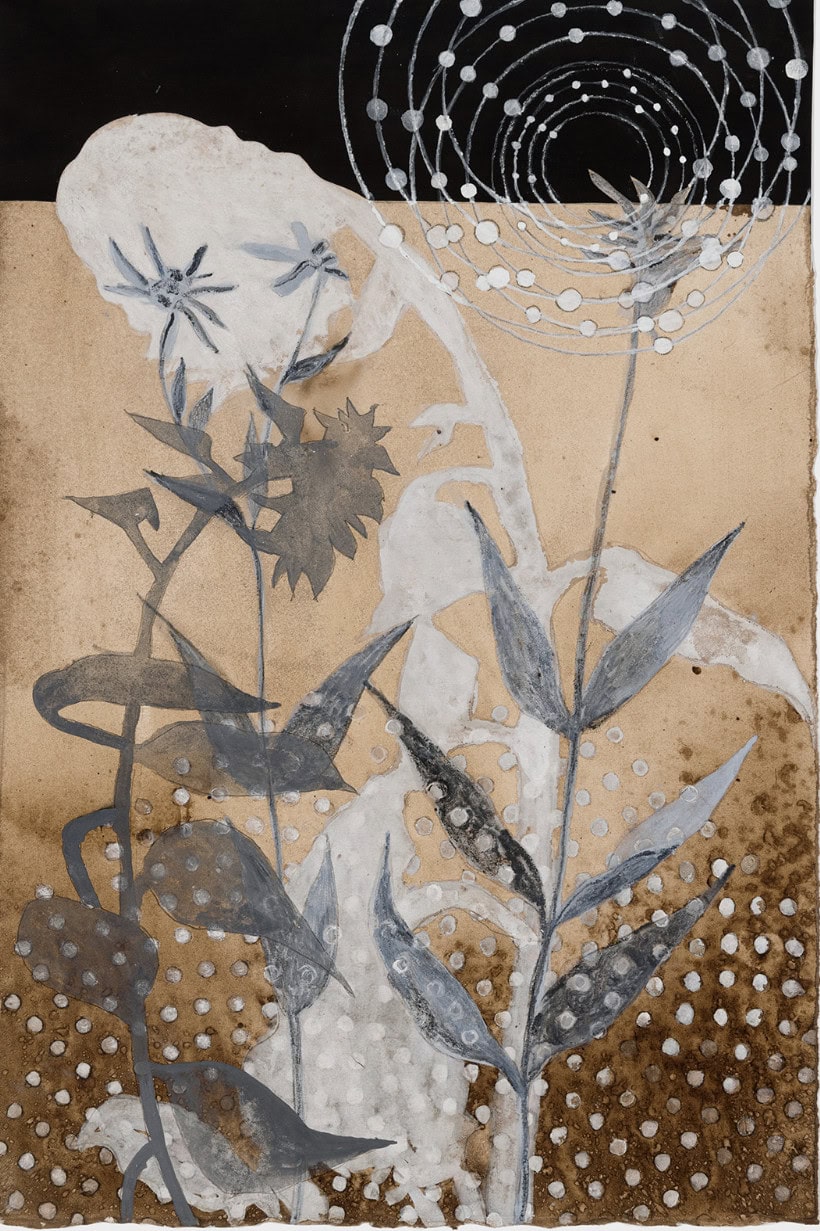
Sunflowers help to restore a landscape scarred by radiation and heavy metals at Chernobyl in Ellen Driscoll's painting in black walnut and sumi ink. Press image courtesy of the artist
And so, she said now, the long recovery from her own illness, the theme of mending and healing and remediating grew from the work the plants were doing to encompass her own slow but steady process.
At the same time, changes in the environment have become internationally important, as as present as slush on the pathways around her.
“We’re in the middle of climate change,” she said, “and it’s so huge, and nobody really knows quite what to do, but almost everybody feels some kind of an effect from it. I live in Brooklyn and we only had one snowfall this winter, and it was pitiful, only an inch and a half — everyone experiences the warming, the weird storms, off-kilter seasons that are not quite with the world, certainly not even what you remembered from growing up.”
She has touched on the theme in earlier work, she said. In an artist residency in s long ago as 2017, she had made a drawing of grevillia or spider flower, a shrub from Australian and New Zealand with a vivid red flower, doing remediation work in a strip mine in central Western France.
Coming back to it again, as she prepared for this show, she learned that the science plants recovering the land
“Some of this is being researched and discovered as we’re talking. There are five plants that come up over again — sunflower, willow, poplar, and vittata and mustard — but as I was drawing these, for every plant I would draw, there would be two more I would discover.”
Talking with a colleague at Bard, professor of environmental studies Erik Kiviat, she learned new properties of phragmites, a tall and aggressive grass. (It grows in the Berkshires, though it is not native here.)
He told her that while many people in the Northeast are concerned with phragmites, as it competes with native plants in the marshes, when they grow in water that has been polluted by say agricultural runoff, the tall plants will take those chemicals up into their stems. And again, over time, they can neutralize the toxins in the water.
As she has explored, she has learned more plants and more kinds of remediation they may be able to do — vittata, pine, silver buttonwood.
Different plants may do this kind of healing work in different ways, Driscoll said. Some may filter through their roots, and some will store toxins a tree trunk and keep them from traveling to the leaves.
In her poplar drawing, she shows the heaves surrounded by the molecules of a chemical the tree can interact with, trichloroethylene, used as a coolant and a solvent to remove grease.
According to the EPA and the National Institute of Health, for humans it can be dangerous to the liver, kidneys, immune system and central nervous system, and can cause cancer.
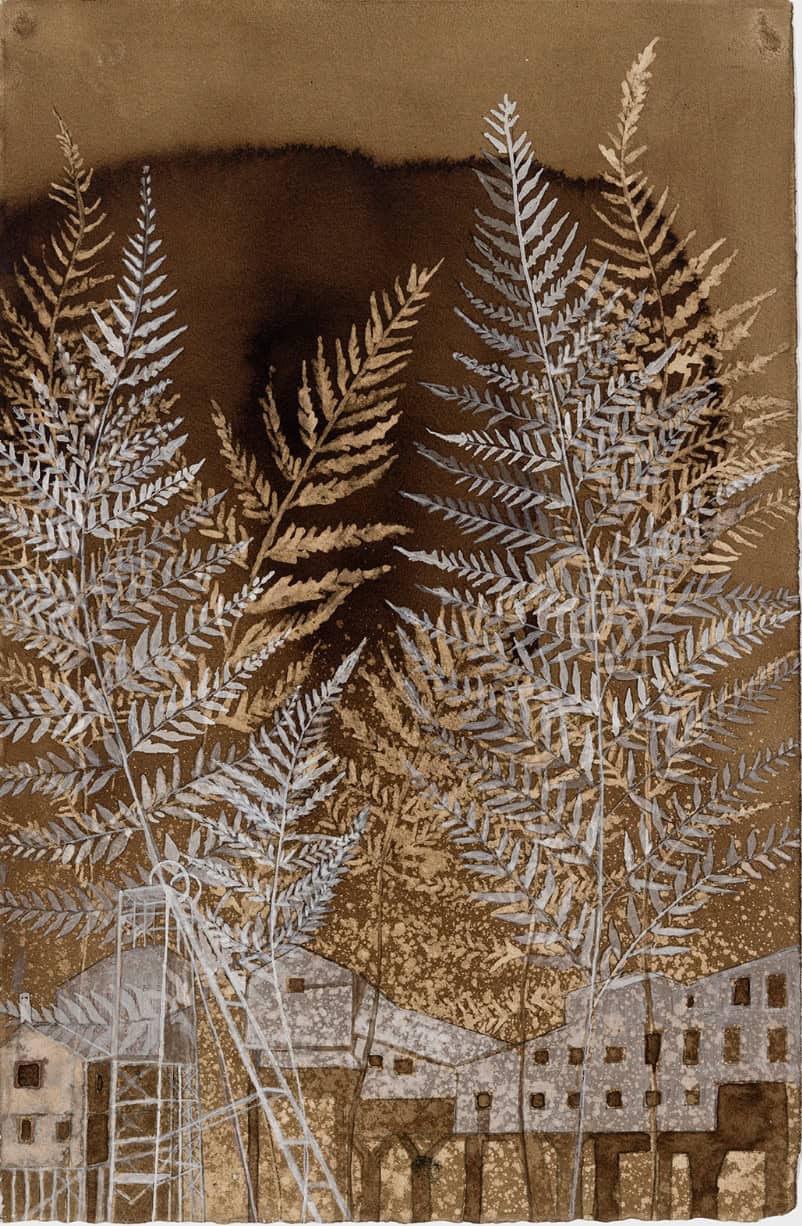
Silver fern help to counteract the effects of coal in Ellen Driscoll's painting in black walnut and sumi ink. Press image courtesy of the artist
As she has explored, she has learned more plants, she said, and more kinds of remediation they may be able to do — vittata, pine, silver buttonwood. She often begins her portraits with photographs from the New York Botanical Garden, she said, and she will trace drawings on an inked page, working with a soft rag paper and carbon paper.
She may use use other photographs for reference, she said. Among her sources for industrial scenes, she once had a residency in Ireland, outside of Cork, and the only oil refinery in Ireland right across the water. The residency was able to get her access to photograph there. More recently she has researched historic images of the coal industry from the New York Public Library picture collection.
These images can feel bleak, as climage change can feel enormous, she said, so vast that people can easily feel overwhelmed and think, ‘there’s no hope, and there’s nothing we can do.’ She finds her own work helpful in response, because it shows some positive movement.
“I you know where to look, there is plenty of activity that is going in the right direction,” she said.”I volunteer for a group called 350 Brooklyn, and they’re very, very focused on legislation for New York State and New York City … I mean, every single week, they have an hour devoted to calling representatives about key legislation. And over the two years that I’ve worked with them, I’ve actually seen a $4 billion bond act get passed. …
“And when you participate in something like that, you’re not filled with despair anymore. You’re focused on those short-term (actions) that make you think, well, if there was enough will in the right areas, you could turn some of this around, Maybe not all of it, but some of it.”
This story first ran in the Berkshire Eagle weekender — my thanks to features editor Jennifer Huberdeau.
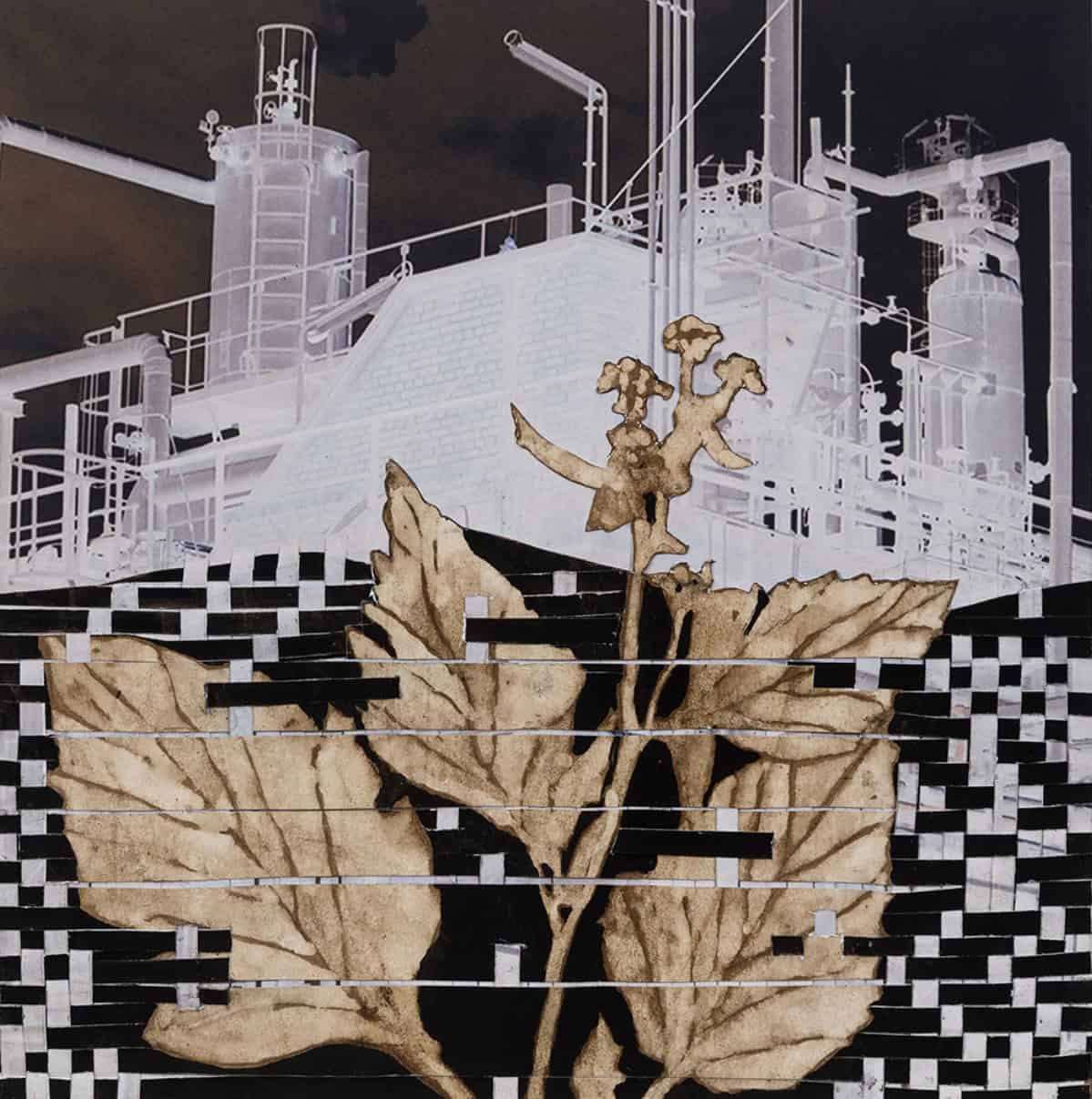
Mustard helps to heal the land around an oil refinery in Ellen Driscoll's painting in black walnut and sumi ink. Press image courtesy of the artist

